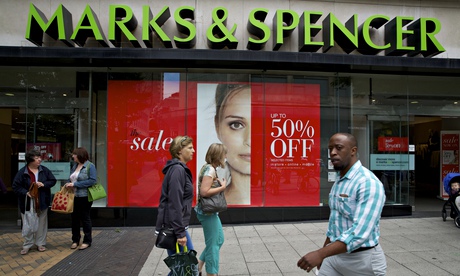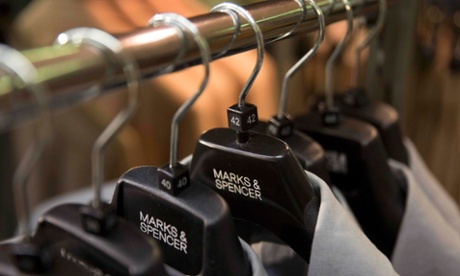The latest trend on the British high street is not a hemline but a concept: fashion, it seems, is going out of fashion. In their newest effort to fight for survival, high street stalwarts John Lewis and Marks & Spencer are eschewing seasonal “key pieces” and “must haves” to focus on individualism and personal style.
This week, John Lewis unveiled its overhauled in-house womenswear range for autumn/winter. The 300-piece collection – to be launched as part of a major rebrand and store refitting programme on 4 September – “is about style over fashion”, according to Iain Ewing, the head of womenswear. “One thing that came back really clearly from our customers,” he says, “was that they wanted to know whatever they bought wouldn’t go out of fashion in six months.”
John Lewis’s new look centres on sleek staples such as duster coats, funnel-necked silk shirts, leather pencil skirts and wide-legged tailored trousers. Materials have been upgraded: all handbags are now leather; and fabrics are richer in wool and cashmere. The existing price range of £10 to £250 has not changed, although – with coats and leather knee-high boots at £175 and £250 – there is more “in the upper end of the bracket”, says Ewing. The majority of pieces are available in a range of colours – a cashmere blend double-faced belted coat, for example, comes in fuchsia, pale blue and camel – with the aim of encouraging customers to build outfits that cater to their individual taste.
Similarly, Marks & Spencer is not gunning for a sell-out “pink coat moment” this autumn. Last month, the troubled retailer unveiled its next womenswear salvo, an autumn collection focusing on macro trends – caramel-coloured, double-breasted suiting, long-sleeved midi dresses, coats in drop-shouldered Prince of Wales check, leopard print faux fur – rather than flash-in-the-pan seasonal flourishes. At the time, the company’s style director, Belinda Earl, described it as “heartland M&S”.
Both brands’ strategies chime with two modish concepts: that shoppers should buy fewer, better quality items and keep them for longer, a palatable approach for the ethically-minded high street shopper, and an increasing understanding from brands that, for many customers, individualism is more aspirational than slavishly following trends. Both ideas were central to the launch of Arket, H&M’s more expensive recent minimalist addition to the British high street.
This is a tough moment for traditional high street retailers. John Lewis last month issued a warning ahead of its half-year results; it expects profits to be “close to zero” for the first half of the year. In May, Marks & Spencer revealed the closure of at least 100 stores by 2022.
The strategy is not without risks, says Kate Ormrod, lead analyst, retail at GlobalData. “In theory, it could work, because they are listening to their customers. Most shoppers aged over 35 don’t want to keep up with the cycle of newness seen at Primark and Boohoo, or be told that they ‘must have’ a certain style.
“But there is a danger of being too watered down and losing cut-through. There has to be balance. And M&S’s market share particularly has declined a lot in the last decade, so they have a huge struggle on their hands.”











